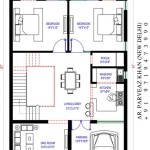Essential Aspects of Small Home Building Plans
Building a small home can be a rewarding experience, providing you with a cozy and efficient living space that aligns with your budget and lifestyle. To ensure a successful project, it's crucial to carefully consider key aspects when designing your small home building plans.
1. Space Planning and Utilization
Small homes demand clever space planning to maximize every square foot. Determine the essential rooms and their required sizes based on your family's needs. Consider vertical space by incorporating lofts or storage mezzanines to expand living areas. Utilize built-in storage solutions to declutter and save space, such as under-bed drawers, pull-out shelves, and wall-mounted cabinets.
2. Natural Light and Ventilation
Natural light can dramatically enhance the ambiance and livability of your small home. Incorporate large windows, skylights, and sliding glass doors to flood the interiors with sunlight. Proper ventilation is equally important, ensuring fresh air circulation and reducing moisture buildup. Design cross-ventilation by placing windows or vents on opposite sides of rooms to allow airflow.
3. Energy Efficiency and Sustainability
Small homes can be highly energy-efficient, reducing your utility bills and environmental impact. Consider using energy-efficient appliances, installing solar panels, and opting for sustainable materials like recycled wood or bamboo. Proper insulation and air sealing will minimize heat loss and improve the energy performance of your home.
4. Structural Integrity and Durability
While size may be smaller, the structural integrity of your home is paramount. Ensure your plans adhere to building codes and are structurally sound. Choose durable materials for framing and exterior cladding that can withstand weather conditions and provide longevity. Proper foundation design and drainage systems are vital to prevent moisture damage and maintain the stability of your home.
5. Aesthetic Appeal and Curb Appeal
Even small homes can exude style and charm. Consider the architectural style that aligns with your preferences and the surrounding neighborhood. Choose exterior materials and finishes that enhance curb appeal, such as natural stone, brick, or contemporary siding. Landscaping and outdoor spaces can further enhance the aesthetic appeal of your small home.
6. Flexibility and Adaptability
Small homes often require flexibility to accommodate changing needs. Design rooms that can serve multiple functions, such as a guest room that converts into a home office. Incorporate movable partitions or folding walls to create flexible spaces that can be easily reconfigured. Built-in storage and furniture can also provide additional flexibility and adaptability.
7. Cost-Effectiveness and Value for Money
Building a small home should be cost-effective without compromising on quality. Carefully evaluate the materials, finishes, and construction methods to optimize costs. Consider prefabricated or modular construction to save time and expenses. Remember, a well-designed small home can provide excellent value for money and a comfortable living environment.

Small House Design 2024001 Pinoy Eplans Floor Plans

Small House Plans Simple Tiny Floor Monster

10 Small House Plans With Open Floor Blog Homeplans Com

These Small House Plans Pack A Lot Of Punch Houseplans Blog Com

10 More Small Simple And House Plans Blog Eplans Com

Modern Tiny House Home Building 2 Bedroom Bathroom Plans Cad File

Tiny House Plan Examples

Building Plans And Blueprints 42130 Affordable House Small Home Plan Tiny Floor

Small House Plan Examples

Small House Plans Should Maximize Space And Have Low Building Costs








